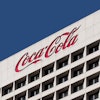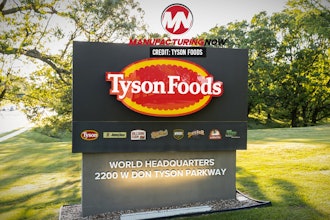The long-anticipated release of the final SQF Code Edition 8 came on March 31, 2017. All SQF Audits conducted after January 2, 2018 will be audited to the SQF Code Edition 8 requirements. Companies now must take time to understand the revised requirements and reassess SQF systems to bring them into compliance with the updated standards. Safe Quality Food Institute (SQFI) took the opportunity to restructure the SQF Codes to simplify the process and to assure Edition 8 meets the Global Food Safety Initiative (GFSI) Benchmarking Requirements updated earlier in 2017.
SQF Code Edition 8 includes some new requirements for new programs such as Food Fraud, Environmental Monitoring, Equipment Commissioning and others, along with updating several other requirements in the standards in the vein of continuous improvement to assure robust food safety and quality systems. These systems should help SQF-certified companies by better protecting those businesses and brands, and reducing the risk of product recalls and foodborne illness outbreaks, as well as helping customers and consumers with consistent supplies of safe, quality products throughout the supply chain.
Let’s first look at some of the structural changes to the SQF Codes and then discuss implementation strategies to help with a successful transition to SQF Edition 8. There are now seven distinct new SQF Codes, as follows:
- SQF Food Safety Fundamentals (formerly Level 1 certification)
- SQF Food Safety Code for Manufacturing
- SQF Food Safety Code for Primary Production
- SQF Food Safety Code for Storage and Distribution
- SQF Food Safety Code for Manufacture of Food Packaging
- SQF Food Safety Code for Food Retail
- SQF Quality Code (formerly Level 3 certification)
It is important to know the structure of the codes in order to understand which standard a company wants to be certified in, in order to properly define the scope of the certification. All SQF codes are available for download at www.sqfi.com. These include the code, a summary of changes and an Excel version of the standard, which can be used to complete a gap analyses or internal audits of the codes.
A good way to illustrate the structure of the codes is below:
Under SQF Edition 8, the scoring and rating systems will remain the same as they were in SQF Edition 7.2. There are two major changes in the Part A requirements. Opportunities for Improvement (OIP’s) have been removed as a potential response. OIP’s were often used inconsistently in the past, so this will eliminate any confusion regarding whether a situation is non-compliant versus not representative of industry best practices. If an auditor identifies a non-conformity with a standard clause, it must be rated as Minor, Major or Critical. This could potentially decrease audit scores and ratings in the future if an auditor commonly used OIP’s in the audit report. Secondly, the time frame to submit corrective actions is now 30 days for all non-conformances, rather than the previous more stringent requirement of corrective actions due within 14 days for major non-conformances, which will be helpful to industry.
Let’s now focus on implementation strategies that can help a company prepare for compliance with the SQF Code Edition 8 standard. There are four key steps to success to achieve compliance with SQF Edition 8. These include:
- Awareness and Training
- Gap Analysis
- Program Development/Reassessment and Facility Changes
- Internal Audits
Awareness and Training
SQFI, Alchemy Systems and many other organizations are holding webinars to help the industry understand the new requirements. Everyone is encouraged to watch these presentations to gain at least a baseline understanding of the new requirements. Beyond this general awareness, though, more detailed training — such as a four-to-eight hour SQF Edition 8 Conversion Training — is recommended to take a deeper dive into the new and revised requirements, and to learn best practices to develop new programs required such as Food Fraud, Environmental Monitoring, Equipment Commissioning and more.
For new SQF Practitioners, and those seeking the most in depth understanding of SQF Edition 8 training, it is recommended to take the SQFI Online Training or public course on SQF Edition 8 which was expected to be released by late July. SQFI will also be releasing an online training option for the SQF Quality Code so SQF Practitioners can gain an understanding of how to properly develop and implement the Food Quality Plan and Quality process control systems.
Gap Analysis
It’s imperative to understand all the new and revised requirements included in SQF Edition 8. The best way to do this is to complete a SQF Edition 8 Gap Analysis utilizing the Excel version of the standard that companies will be audited against. During the Gap Analysis, review each line item in the clause requirements to assure compliance with the requirements for every item included in the standard. When gaps or non-conformities are identified, these should be noted on the Gap Analysis Checklist and documented in a Corrective Action Register to assure they can be followed up on and corrected. This process can be performed internally or with professional third-party consultants. Once the Gap Analysis and Corrective Action Register are complete, the SQF team can manage the process with routine meetings to ensure the items identified on the Corrective Action Register are completed and verified to bring companies into compliance.
Some of the major new requirements to look for during the gap analysis process include:
- Section 2.1.3: Requirements for monthly meetings between the SQF Practitioner and Senior Management
- Section 2.4.4 and 2.7.2: Requirements to complete a Food Fraud Vulnerability Assessment on all raw materials and development of a Food Fraud Mitigation Plan
- Section 2.4.8: Requirements for all companies to develop and implement a risk-based Environmental Monitoring Program
- Section 2.6.1: Requirements for Product Changeover/Line Clearance Program
- Section 11.2.9.1: Requirements for an Equipment Commissioning Specifications Program
- Section 2.4.3: Requirements for the Food Safety Plan expanded to include 17 components to now check for individually
- Section 2.8.2: Requirements for the Allergen Management Program expanded to included seven new specific sections to now check
- Section 2.5.5: Requirements for Internal Audits to include both facility inspections and the SQF System Audits by trained and independent internal auditors
- Section 11.7.6.3: Requirements for Foreign Material Control to have records of inspections of rejected products
- Section 11.9.1.5: Requirements for Inedible Product for Animal Food Handling
This is just a partial list of some of the major changes. It is critical to do a complete gap analysis to identify all the changes that are necessary for the code.
Program Development/Reassessments and Facility Changes
Once the gaps are identified, utilize a road map to close the gaps. This will include documenting the new programs required, and changing existing programs as needed to comply with SQF Code Edition 8. All SQF programs must be reviewed annually to assure they meet the standards.
In addition to the programs, a facility inspection should be completed to determine the facility requirements that need to be addressed to comply with SQF Code Edition 8. There are numerous requirements for areas such as visitor/contractor proficiency training and testing, personnel requirements, chemical concentration checks, bodily fluid controls, storage procedures, pest control procedures and more that must be considered for compliance to SQF Edition 8.
Internal Audits
Once all the new programs, facility requirements and records have been implemented to close the gaps identified on the Corrective Action Register, a formal internal audit should be completed to verify compliance with the SQF Edition 8 requirements.
The SQF System Internal Audit should include completing the entire SQF Checklist for the applicable standards. This internal audit is a requirement in the standard and should be documented for evidence of compliance for presentation during an audit. Corrective actions to any non-conformities identified during the internal audit must be documented.
Effective internal audits are a great way to keep SQF systems on track and continually improving. It is recommended to create a schedule to complete portions of SQF System Audits and Prerequisite Program Verifications/Validations on a routine monthly or quarterly schedule in order to rotate through the entire system over the course of a year.
Always remember that internal auditors should be independent of the area being audited and trained in internal audit procedures to know what to look for and how to document the results of the audits.
Pulling It All Together
It’s recommended to start sooner rather than later to prepare for SQF Edition 8 compliance. It takes some time to do it properly through a gap analysis, program development and internal auditing process. Companies will want to be compliant with the Edition 8 requirements by January 2, 2018, and certainly well before an initial or recertification audit is completed in 2018.
Companies can use the SQF Practitioner monthly meetings with senior management as an impetus to start and manage this process. If companies do not have the necessary internal expertise to adequately develop some programs such as Food Fraud or Environmental Monitoring, it is recommended that they consult outside resources to help ensure that the programs developed are compliant yet manageable for their facility.
Last, it is recommended that all companies consider certification under the SQF Quality Code in addition to SQF Food Safety Code certifications. Companies formerly certified at Level 3 will definitely want to be certified in the SQF Quality Code to maintain equivalency to their previous certification level. However, all companies can benefit from implementing quality process control systems that protects their brands from product recalls and foodborne illness outbreaks while protecting customers and consumers with a consistent supply of safe, quality foods.
After all, isn’t that what it’s all about?






















